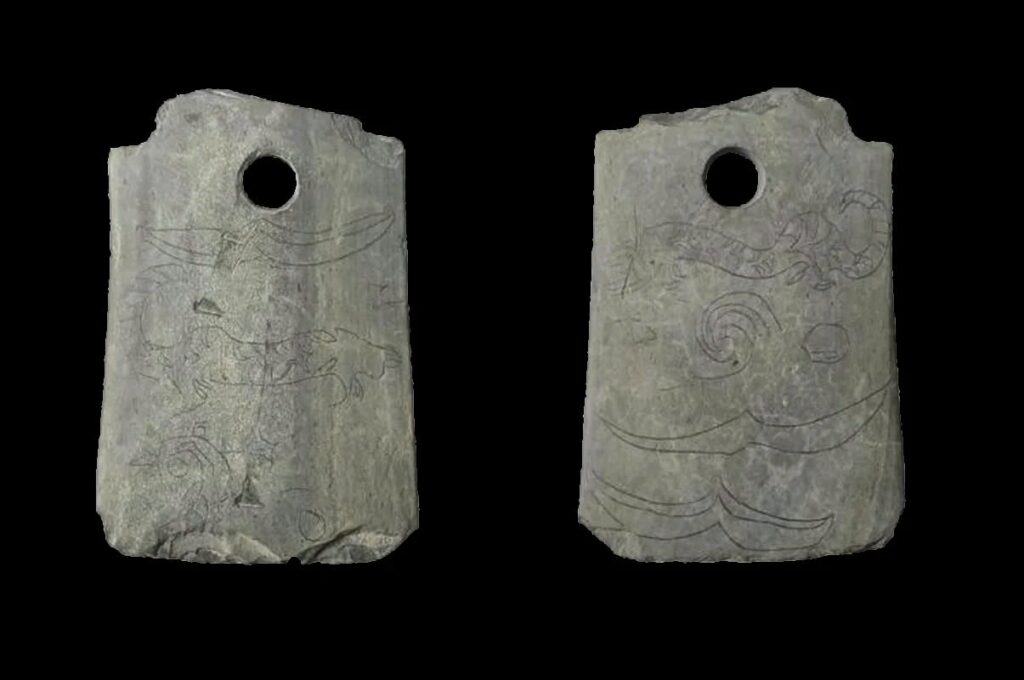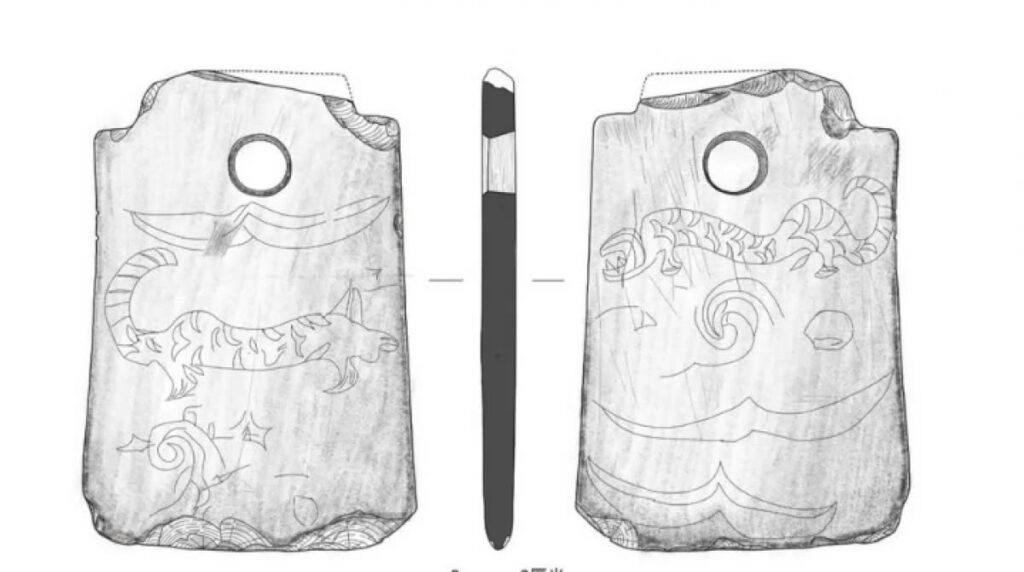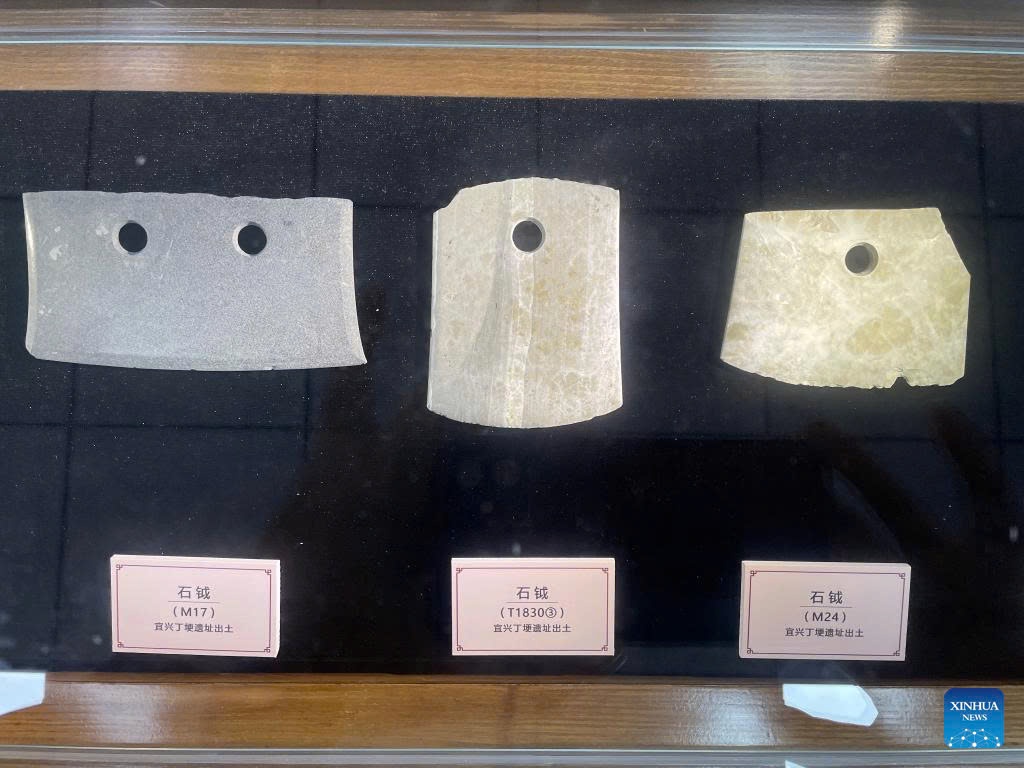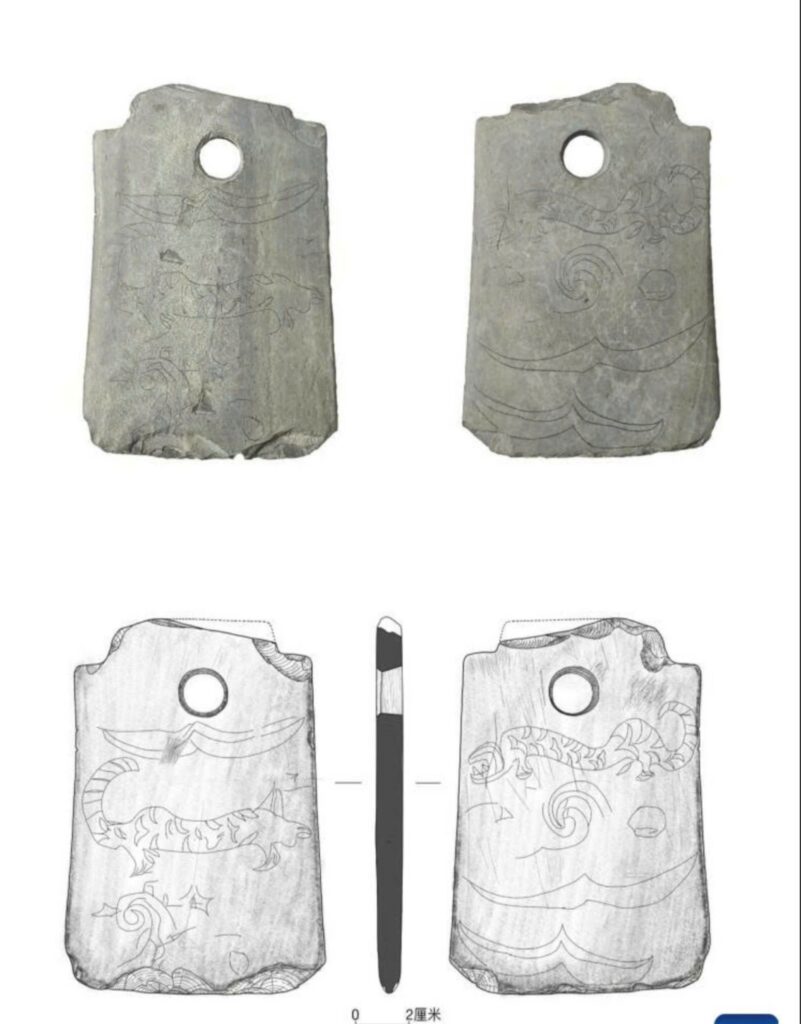A Glimpse into the Liangzhu Culture

Archaeologists in Wuxi City, eastern China’s Jiangsu Province, have made a groundbreaking discovery that sheds new light on the ancient Liangzhu Culture. Among a treasure trove of artifacts unearthed at the Dinggeng archaeological site, one item stands out as truly extraordinary: a 4,500-year-old axe-shaped stone weapon adorned with intricate tiger patterns.
The Rare Ritual Weapon

This unique stone relic, dating back to the Liangzhu Culture period (3300-2250 BCE), has left archaeologists in awe. The axe-shaped weapon, believed to be used in ancient rituals, features exquisite engravings of tigers, clouds, and birds on both sides. Its discovery marks the first time such a tiger-patterned stone relic has been found, leading experts to speculate that it may have been a symbol of power in this early Chinese civilization.
A Rich Archaeological Site
The Dinggeng site has yielded a wealth of artifacts, including:
- 329 stone tools
- 73 stone and bone arrowheads
- Numerous ceramic and jade artifacts
The axe was found on a sacrificial platform, showing signs of wear and damage that hint at its ritual significance.

The Liangzhu Legacy
The Archaeological Ruins of Liangzhu City provide invaluable insights into an early regional state in China’s Late Neolithic period. This society was characterized by:
- Rice cultivation as its economic foundation
- Clear social differentiation
- A unified belief system
The discovery of this tiger-patterned ritual weapon adds a new dimension to our understanding of the Liangzhu Culture’s artistic achievements and symbolic practices.

As Liu Baoshan, head of the Wuxi Institute of Cultural Relics and Archaeology, notes, the patterns on the axe feature “single, relatively smooth lines,” showcasing the craftsmanship of these ancient artisans.
This remarkable find not only enriches our knowledge of the Liangzhu Culture but also offers a tangible connection to the power structures and ritual practices of a civilization that flourished over four millennia ago.

